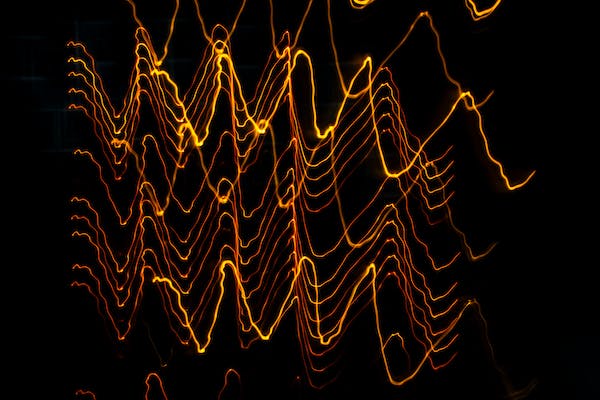How To
8 “Technical” Facts Everyone Knows But Usually Isn’t Explained
SD24 News Network –
Here are a few “technical” facts that many people know but may not fully understand:
01. The Earth revolves around the Sun:
This is a basic fact that many of us learned in school, but may not fully understand the mechanics of. The Earth orbits the Sun in an elliptical path, taking approximately 365.24 days to complete one revolution.How does the Earth revolve around the Sun?
The Earth revolves around the Sun in an elliptical orbit, which means that its path around the Sun is not a perfect circle but rather an elongated oval shape. The distance between the Earth and the Sun varies over the course of the year due to this elliptical orbit. When the Earth is closest to the Sun in its orbit (known as perihelion), it is about 91.4 million miles (147.1 million kilometers) away from the Sun. When it is farthest from the Sun (known as aphelion), it is about 94.5 million miles (152.1 million kilometers) away.
The Earth’s revolution around the Sun is caused by the force of gravity between the two bodies. The Sun’s massive size and gravitational pull keep the Earth in its orbit, while the Earth’s velocity and centrifugal force keep it from falling directly into the Sun. The Earth’s rotation on its axis, which takes approximately 24 hours to complete, also contributes to the appearance of the Sun rising and setting each day as seen from the Earth.
02. Gravity:
Gravity is a force that pulls objects towards each other. This force is responsible for keeping planets in orbit around stars, and for keeping us grounded on the Earth’s surface. The strength of gravity depends on the mass of the objects and the distance between them.What is gravity and how does it work?
Gravity is a fundamental force of nature that exists between any two objects with mass or energy. It is the force that causes objects to be attracted towards each other. The greater the mass of an object, the stronger its gravitational pull.
Gravity is described by Isaac Newton’s law of universal gravitation, which states that every particle in the universe attracts every other particle with a force that is proportional to the product of their masses and inversely proportional to the square of the distance between them. This means that the force of gravity gets weaker as the distance between two objects increases.
Albert Einstein’s theory of general relativity provides a more accurate description of gravity, describing it as the curvature of space-time caused by the presence of mass or energy. According to this theory, gravity is not a force that acts over a distance, but rather a distortion of space and time caused by massive objects.
The effects of gravity are visible on a large scale, such as the way planets orbit around stars and moons around planets, but it also affects objects on a smaller scale, such as apples falling from trees or objects staying on the ground instead of floating off into space.
03. The speed of light:
The speed of light is a fundamental constant of the universe, equal to approximately 299,792,458 meters per second. Light travels at this speed in a vacuum, and nothing can travel faster than it.How to understand speed of light?
The speed of light is the fastest speed at which anything can travel through space, and is approximately 299,792,458 meters per second, or about 186,282 miles per second. It is a fundamental constant of the universe, and plays a crucial role in our understanding of physics and the cosmos.
To understand the speed of light, it helps to know that light is a form of electromagnetic radiation that travels as waves through space. These waves have both an electric and a magnetic component, and they travel through a medium called the electromagnetic field. This field permeates the entire universe, and light waves can travel through it without the need for a medium such as air or water.
The speed of light is constant and does not change, regardless of the observer’s speed or direction of motion. This means that if you were to shine a light beam from a moving spacecraft, the speed of the light would still be the same as if it were shining from a stationary object on Earth.
The speed of light is also related to the concept of time dilation, which is a prediction of Einstein’s theory of relativity. According to this theory, time appears to move slower for objects that are moving relative to an observer on Earth. This effect becomes more pronounced as an object’s speed approaches the speed of light, and becomes infinite at the speed of light itself.
Overall, the speed of light is a fundamental constant of the universe that plays a crucial role in our understanding of physics and the nature of the cosmos.
04. The periodic table of elements:
The periodic table is a tabular display of all known chemical elements, organized according to their atomic structure and chemical properties. It is an essential tool for chemists and other scientists who study matter.How is the periodic table of elements?
The periodic table of elements is a table that organizes all known chemical elements based on their atomic structure and properties. The elements are arranged in order of increasing atomic number, which is the number of protons in the nucleus of an atom.
The horizontal rows on the periodic table are called periods, and the vertical columns are called groups or families. Elements within the same group or family have similar chemical and physical properties, while elements in different groups have different properties.
The periodic table is divided into four main blocks: the s-block, the p-block, the d-block, and the f-block. The s-block elements are the first two groups on the left side of the table, and they have valence electrons in the s orbital. The p-block elements are the last six groups on the right side of the table, and they have valence electrons in the p orbital. The d-block elements are in the middle of the table and have valence electrons in the d orbital, while the f-block elements are at the bottom of the table and have valence electrons in the f orbital.
The periodic table also includes information about the properties of each element, such as its symbol, atomic mass, electron configuration, and various physical and chemical properties. This information is useful for predicting how different elements will interact with each other and for understanding the properties of compounds and materials made from these elements.
The periodic table is an essential tool for chemists and other scientists who study the properties and behavior of different elements and their compounds.
05. The human circulatory system:
The circulatory system is responsible for delivering oxygen and nutrients to the body’s cells and removing waste products. It includes the heart, blood vessels, and blood.Brief Introduction to Human Circulatory System
The human circulatory system, also known as the cardiovascular system, is a complex network of organs and vessels that transports blood and nutrients throughout the body. Its main function is to deliver oxygen and nutrients to the cells and tissues of the body, and to remove waste products such as carbon dioxide.
The circulatory system consists of the heart, blood vessels, and blood. The heart is a muscular organ that pumps blood throughout the body. The blood vessels include arteries, which carry oxygen-rich blood away from the heart, and veins, which carry oxygen-poor blood back to the heart. Capillaries are tiny blood vessels that connect arteries and veins and allow for the exchange of nutrients and waste products between the blood and the cells.
The circulatory system is also responsible for regulating the body’s temperature and pH balance, as well as playing a role in the immune system by transporting white blood cells to fight infections.
The human circulatory system is essential for maintaining the health and functioning of the body. Any disruptions or problems with this system, such as blockages in the arteries or weakened heart muscles, can lead to serious health problems such as heart disease, stroke, or organ damage. Therefore, it is important to maintain a healthy lifestyle, including regular exercise and a balanced diet, to support the proper functioning of the circulatory system.
06. The electromagnetic spectrum:
The electromagnetic spectrum is a range of frequencies of electromagnetic radiation, including radio waves, microwaves, infrared radiation, visible light, ultraviolet radiation, X-rays, and gamma rays. These different types of radiation have different properties and uses.Brief Introduction to Electromagnetic Spectrum
The electromagnetic spectrum refers to the range of all types of electromagnetic radiation, from radio waves to gamma rays. Electromagnetic radiation is a type of energy that travels through space at the speed of light and is produced by the acceleration of electrically charged particles.
The electromagnetic spectrum is divided into different regions based on the frequency and wavelength of the radiation. The regions include radio waves, microwaves, infrared radiation, visible light, ultraviolet radiation, X-rays, and gamma rays.
Radio waves have the longest wavelength and lowest frequency, while gamma rays have the shortest wavelength and highest frequency. Visible light is the narrow range of the electromagnetic spectrum that can be detected by the human eye and is responsible for the colors we see.
Different types of electromagnetic radiation have different properties and applications. For example, radio waves are used for communication, while X-rays are used for medical imaging and gamma rays are used in radiation therapy for cancer treatment.
Understanding the electromagnetic spectrum is important in many fields, including physics, astronomy, and telecommunications. It has also led to many technological advancements and innovations in fields such as medicine and energy production.
07. The human genome:
The human genome is the complete set of genetic information contained within our DNA. It contains around 20,000-25,000 genes, which determine our physical characteristics and susceptibility to certain diseases.What is human genome? How does it work?
The human genome is the complete set of genetic instructions encoded in the DNA of human cells. It contains all of the information necessary for the development and function of a human being, including the instructions for the production of proteins, which are the building blocks of cells and tissues.
The human genome is made up of approximately 3 billion base pairs of DNA, which are organized into 23 pairs of chromosomes. Each chromosome contains many genes, which are segments of DNA that code for specific proteins or RNA molecules. The genes are responsible for many of the traits and characteristics that make each person unique.
The way the human genome works is through a process called gene expression, which involves the transcription and translation of DNA into proteins. In this process, the DNA sequence of a gene is first transcribed into RNA, which is then translated into a specific protein sequence. The proteins produced by the genes then carry out various functions in the body, such as regulating cell growth, repairing DNA damage, and transporting molecules across cell membranes.
Changes or mutations in the DNA sequence of genes can alter the way they are expressed and can lead to diseases or disorders. Understanding the human genome and its functions has important implications for medicine, including the development of targeted therapies for genetic disorders and personalized medicine based on an individual’s genetic profile.
The Human Genome Project, which was completed in 2003, was a major international scientific effort to map and sequence the entire human genome, and it has provided researchers with a valuable tool for studying genetics and developing new medical treatments.
What is Internet? How does it work?
The internet is a global network of computers and other electronic devices that are interconnected and communicate with each other using standardized communication protocols. It is a vast and complex system that allows people all over the world to connect with each other, share information, and access a wide range of services and resources.
At its most basic level, the internet works by transmitting data packets between devices over a network of interconnected routers and switches. When you request a web page or send an email, your computer sends a data packet containing the necessary information to a nearby router. The router then forwards the packet to another router, and so on, until it reaches its destination.
The internet is built on top of a number of different technologies, including the Transmission Control Protocol/Internet Protocol (TCP/IP), which is used to transmit data packets over the network, and the Domain Name System (DNS), which is used to translate human-readable domain names (such as www.google.com) into IP addresses that can be understood by computers.
The internet also relies on a number of different services and protocols, including email, web browsing, file sharing, and instant messaging. These services are built on top of the underlying network infrastructure and allow users to access and share information in a variety of different ways.
The internet has revolutionized the way we communicate, work, and access information, and it has become an essential part of modern life. However, it also presents a number of challenges, including issues related to privacy, security, and the spread of misinformation. As the internet continues to evolve, it will be important to develop new technologies and policies that can help ensure its continued usefulness and safety.
Continue Reading










